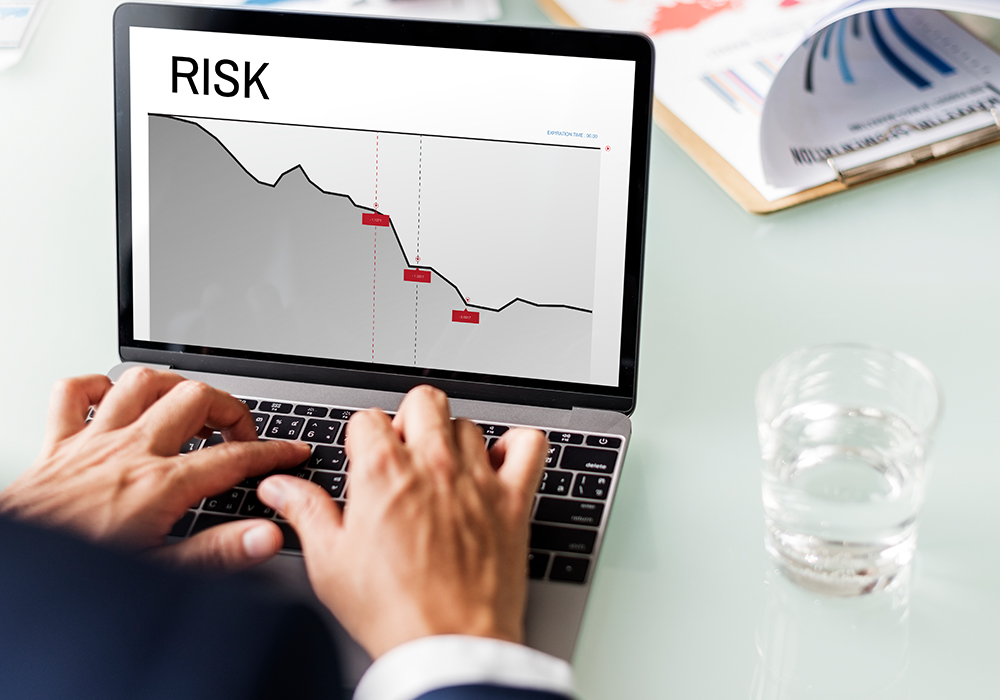The cryptocurrency market is known to be highly volatile, with changes in prices occurring significantly in hours, if not minutes. This, on one hand, is the reason there are exciting profit opportunities; yet, on the other hand, it increases risks for traders, especially the beginners.
Learning how to manage risk is paramount to long-term success in such unpredictability. Following are some key strategies that help in managing the risk and protecting your portfolio in crypto trading.

Diversification: Don’t Put All Your Eggs in One Basket
One of the simplest approaches to managing risk in crypto involves diversification of the portfolio. Instead of investing in a single cryptocurrency, spreading investments across a number of assets reduces any one particular asset’s price drop impact on your overall portfolio.
It cushions it somewhat because separate cryptocurrencies often act independently of each other based on market sentiment, project updates, or regulation changes. You can further balance your portfolio by including a mix of assets, such as stablecoins, which are pegged to the value of some fiat currency.
For example, you can have 70% of your money invested in large coins such as Bitcoin and Ethereum, while the remaining 30% may be divided among promising altcoins, stablecoins, or even new projects focused on DeFi. While it will not avoid risks, through diversification, the impact of losses incurred in a particular asset is reduced to a minimum, thereby creating a potentially well-diversified portfolio.
Stop-Loss Orders: The Most Relevant Action in Loss Limitation
It is among the most effective ways of managing risk, known as stop-loss orders. A stop-loss order automatically sells an asset once it achieves a certain price, hence preventing further possible losses. This tactic is very helpful in crypto trading because the movement of cryptocurrencies can be extreme and very fast. A stop would allow traders to get out with much better losses than if they didn’t have one.
The general rule of thumb is setting stop-losses 5-10% below the purchase price, taking into consideration personal risk tolerance and the volatility of the asset. Beginners might want to use smaller stop-loss percentages as a means of learning the market dynamics. Another way that works effectively in managing stop-losses is adjusting them upward when prices increase; this is called a trailing stop-loss. It will help lock in profit as the price increases.
Risk-Reward Ratios: Calculating the Potential Return
Another effective way to attempt to decide if a trade is worth the risk potential is using a risk-reward ratio. It offers a good way to let a trader know whether the reward will be sufficient to justify taking such a risk. For instance, a 1:3 reward-to-risk in trading means that for every dollar you risk, you want three dollars in return if the trade works in your favor. Higher risk-reward ratios let you make profits even when only a portion of your trades are profitable, provided rewards outweigh the losses.
To set up a reward-to-risk ratio, first measure the possible loss on a trade-from the entry price to the stop-loss price-and weigh that against the possible gain-from the entry price to the target price. It is only possible to avoid overexposure to too risky trades, which do not pay adequate returns, by only considering trades that offer a good risk-reward ratio.
Using Stablecoins to Hedge Against Volatility
The creation of stablecoins, such as USDT, USDC, and DAI, has created a very useful hedge for investors against market volatility. Because of their design to track traditional fiat currencies, like the US dollar, stablecoins do not face wild gyrations as other cryptocurrencies do. Traders could swiftly shift from other volatile assets into a stablecoin in periods of high uncertainty in the markets and preserve their capital until market conditions returned to normal.
This is quite effective, more so for the swing trader and especially day traders looking to lock in profit without removing funds from the crypto market. With stablecoins also comes a more stable way of storing value without having to be exposed to crypto’s high fluctuations in price; this can be quite helpful for those that look to simply wait out periods of high volatility.

Final Thoughts
Trading in such a volatile crypto market necessitates the implementation of several strategies, including diversification, stop-loss orders, risk-reward ratios, and the application of stablecoins. If these techniques are utilized, then traders will be in a position to prevent huge losses of their investments and make a profit from the market.
Just like any form of trading, long-term success in crypto trading entails ongoing learning and the ability to adjust strategies to fit market trends.






